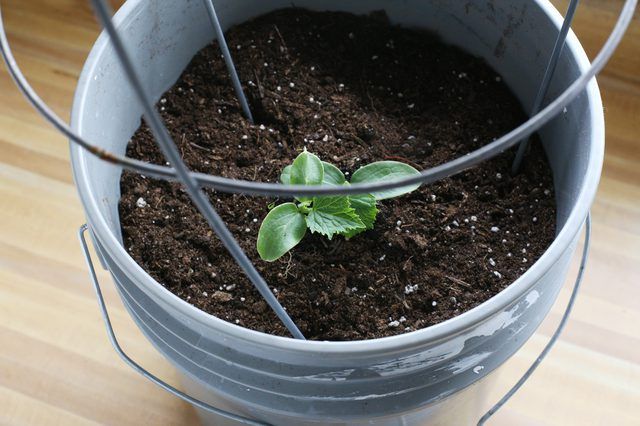Bulbs
Flower Basics
Flower Beds & Specialty Gardens
Flower Garden
Garden Furniture
Garden Gnomes
Garden Seeds
Garden Sheds
Garden Statues
Garden Tools & Supplies
Gardening Basics
Green & Organic
Groundcovers & Vines
Growing Annuals
Growing Basil
Growing Beans
Growing Berries
Growing Blueberries
Growing Cactus
Growing Corn
Growing Cotton
Growing Edibles
Growing Flowers
Growing Garlic
Growing Grapes
Growing Grass
Growing Herbs
Growing Jasmine
Growing Mint
Growing Mushrooms
Orchids
Growing Peanuts
Growing Perennials
Growing Plants
Growing Rosemary
Growing Roses
Growing Strawberries
Growing Sunflowers
Growing Thyme
Growing Tomatoes
Growing Tulips
Growing Vegetables
Herb Basics
Herb Garden
Indoor Growing
Landscaping Basics
Landscaping Patios
Landscaping Plants
Landscaping Shrubs
Landscaping Trees
Landscaping Walks & Pathways
Lawn Basics
Lawn Maintenance
Lawn Mowers
Lawn Ornaments
Lawn Planting
Lawn Tools
Outdoor Growing
Overall Landscape Planning
Pests, Weeds & Problems
Plant Basics
Rock Garden
Rose Garden
Shrubs
Soil
Specialty Gardens
Trees
Vegetable Garden
Yard Maintenance
How to Grow Cucumbers In a Container
How to Grow Cucumbers In a Container. Having a tiny yard -- or no yard -- and growing your own cucumbers (Cucumis sativus) need not be mutually exclusive concepts, if you let a container come to the rescue. Raising cukes in containers has some advantages over growing them the traditional way. Weeds and soilborne pests and diseases aren't issues,...
Having a tiny yard -- or no yard -- and growing your own cucumbers (Cucumis sativus) need not be mutually exclusive concepts, if you let a container come to the rescue. Raising cukes in containers has some advantages over growing them the traditional way. Weeds and soilborne pests and diseases aren't issues, because the growing medium doesn't harbor them. Providing your cucumbers with the six hours of daily sun they need isn't a problem -- simply put the containers on a plant dolly and move them when you need to. With the right cukes, containers and care, a bountiful harvest is well within reach.
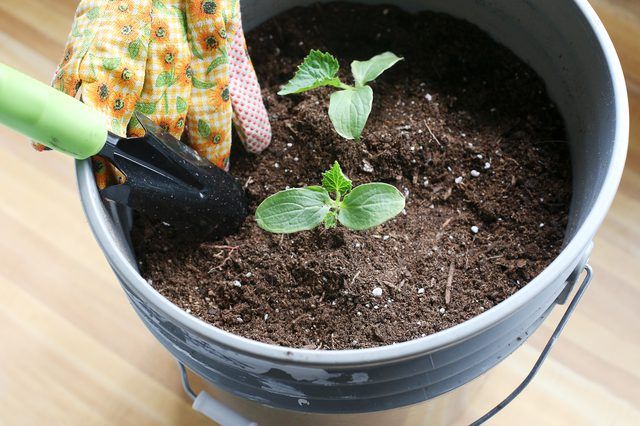
Not all cucumbers grow well in containers. Gardening radio show host Charlie Nardozzi recommends planting bush cucumbers instead of vining varieties. Possibilities include "Spacemaster" (Cucumis sativus "Spacemaster"), with a 26-inch spread, or even more compact "Bush Baby" (Cucumis sativus "Bush Baby"), with 18- to 20-inch vines. A 5-gallon plastic bucket makes an inexpensive, lightweight container with the required depth and diameter for one plant. Any cucumber container needs at least four drainage holes, and you may have to drill them yourself.
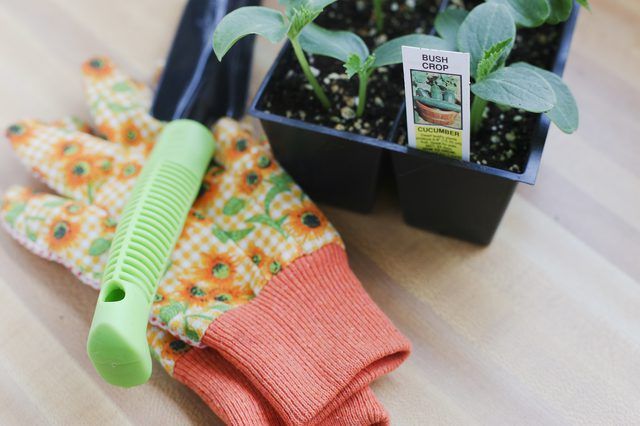
The best medium for container cucumbers is porous enough to drain quickly while still holding enough water keep moisture around the roots. Commercial potting soil mixes work well because they're heavy enough to support the roots and stabilize the container in strong winds. A less expensive alternative is to mix equal parts potting soil, perlite and peat moss and well-aged compost, then amend the mixture with slow-release fertilizer. Use 1/2 tablespoon, or the brand's suggested amount, of balanced 14-14-14 fertilizer for each 1 gallon of soil mix. For a 5-gallon container, mix 2 1/2 tablespoons into the growing medium.

Cucumbers in containers exhaust their limited water supply quickly. Check your plant once a day in cool weather and twice or three times on hot, dry and windy days. Insert a 5-inch wooden dowel into the medium; if no medium sticks to it, don't water. If the medium is dry, water until the excess starts flowing from the drainage holes. Overly wet soil may lead to root rot, so be careful to only water when the soil is starting to become dry.
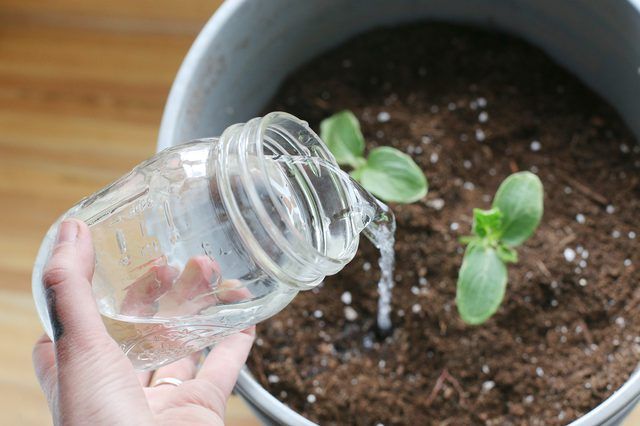
By the time its first fruit appears in summer, a container cucumber has typically used up the nutrients in its original fertilizer. To keep it producing vigorously, start feeding every week with a high-phosphorus, 15-30-15 fertilizer. Water the cucumber well, let it dry for two hours and then provide it with a solution of 1 tablespoon, or the label's suggested amount of fertilizer, dissolved in 1 gallon of water. Don't add more than the recommended quantity because it can damage the cucumber plant's roots.
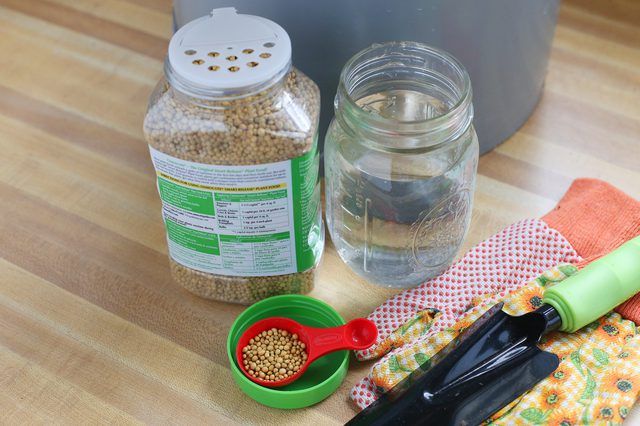
Another advantage of container-grown bush cucumbers is that their fruit isn't likely to rest on the soil and rot. Even so, harvesting goes much more quickly when they have the support of standard tomato cages. Instead of trailing over the sides of their pots, they obligingly clamber up the cagesí sides, and their branches are less likely to break from the weight of their fruit. Simply center the cages over your cucumbers at planting time.
